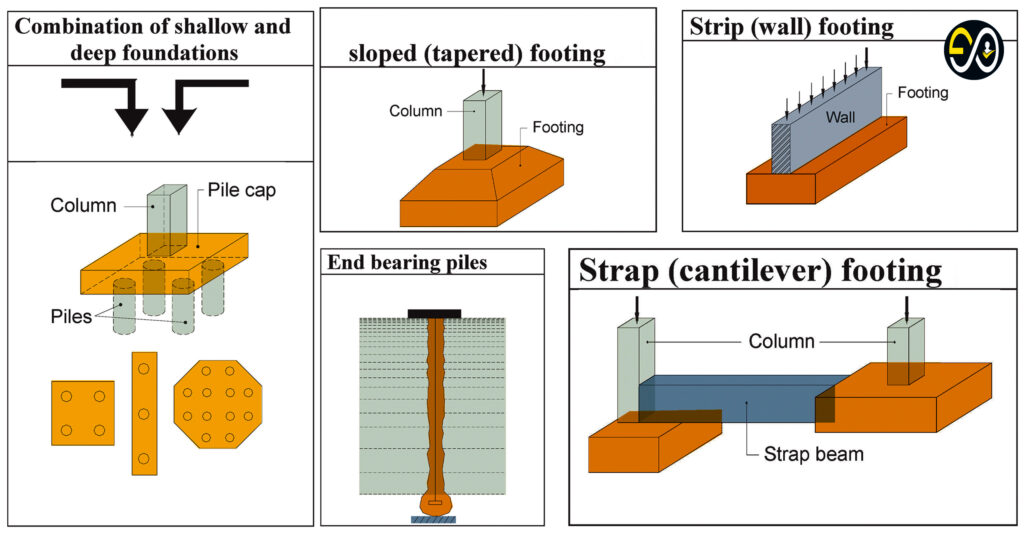
Foundations play a critical role in construction, serving as the structural base that transfers the weight of buildings into the ground. Choosing the right type of foundation ensures the long-term stability and safety of the structure. In this article, we’ll dive into the most common types of foundations used in the construction industry, focusing on both shallow foundations and deep foundations.
Table of Contents
Shallow Foundations: Overview and Types
Shallow foundations are typically used when the load from the structure is light or when the soil close to the surface can bear the weight effectively. These foundations transfer building loads to the earth near the surface. Let’s explore the most prominent types of shallow foundations.
1. Spread Footings
Spread footings are one of the simplest and most commonly used shallow foundations. They “spread” the load over a wide area of soil, ensuring stability for the structure.
- Strip (Wall) Footing: Strip footing, also known as wall footing, supports load-bearing walls. It’s a continuous strip of concrete that supports walls carrying loads. This foundation type is typically used for low-rise buildings where the loads are not excessive.
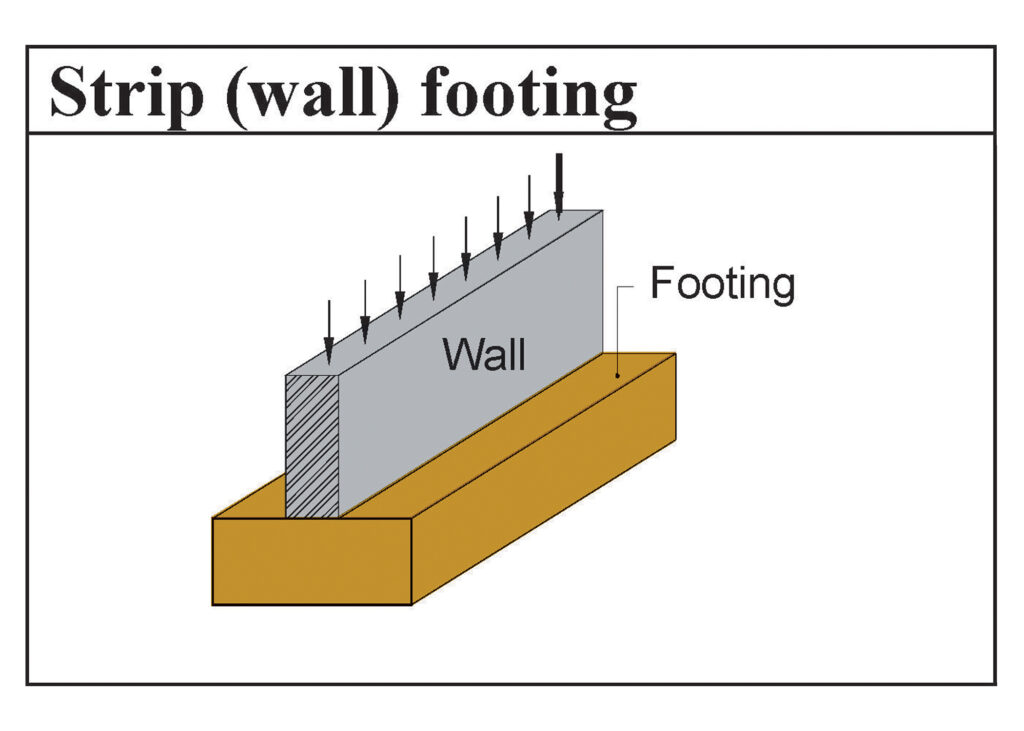
- Isolated Footing: Also known as simple spread footing, this type of foundation supports individual columns. It consists of a rectangular or square slab of concrete that spreads the load from a single column to the soil. There are various types of isolated footings, including:
- Simple Spread Footing: The most basic version where the column load is directly distributed over the footing.
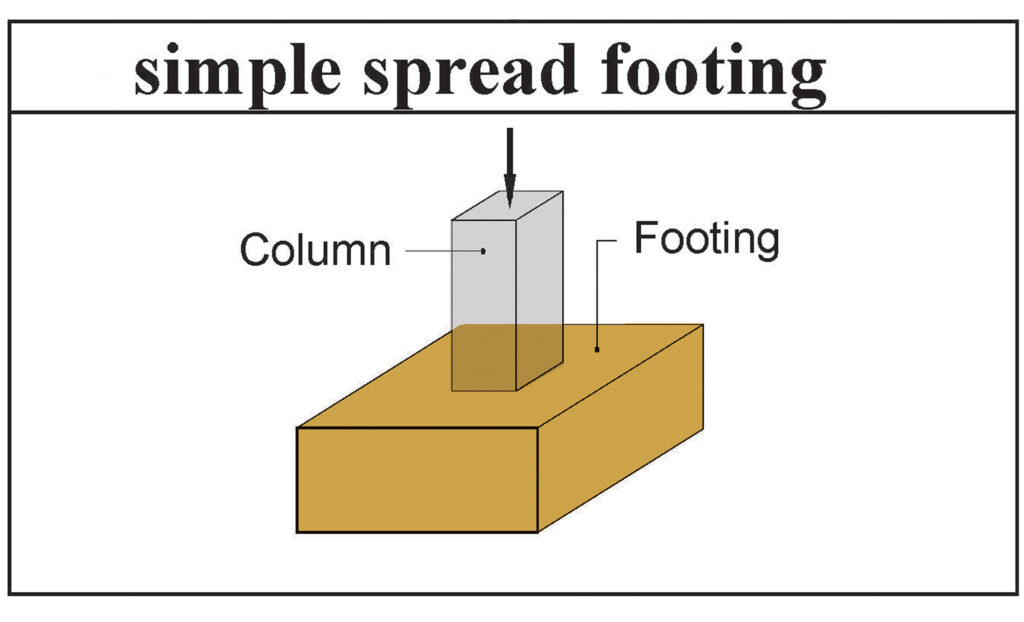
- Stepped Footing: A variation of the isolated footing where a step or pedestal is added to accommodate higher loads or deeper soil layers.
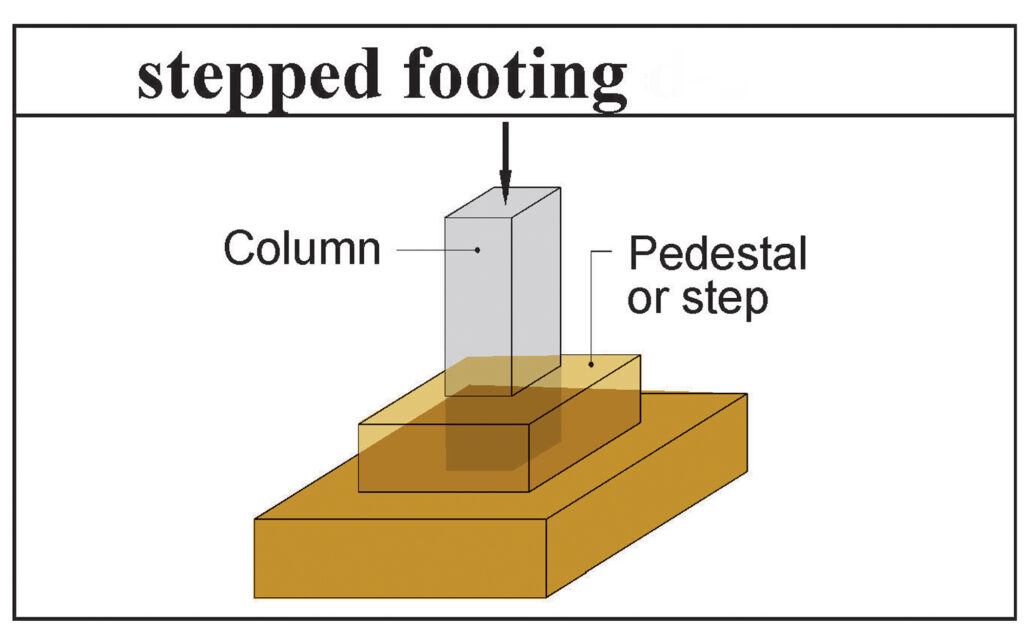
- Sloped (Tapered) Footing: A tapered footing design reduces the amount of concrete used while still supporting the same load by spreading it at an angle.
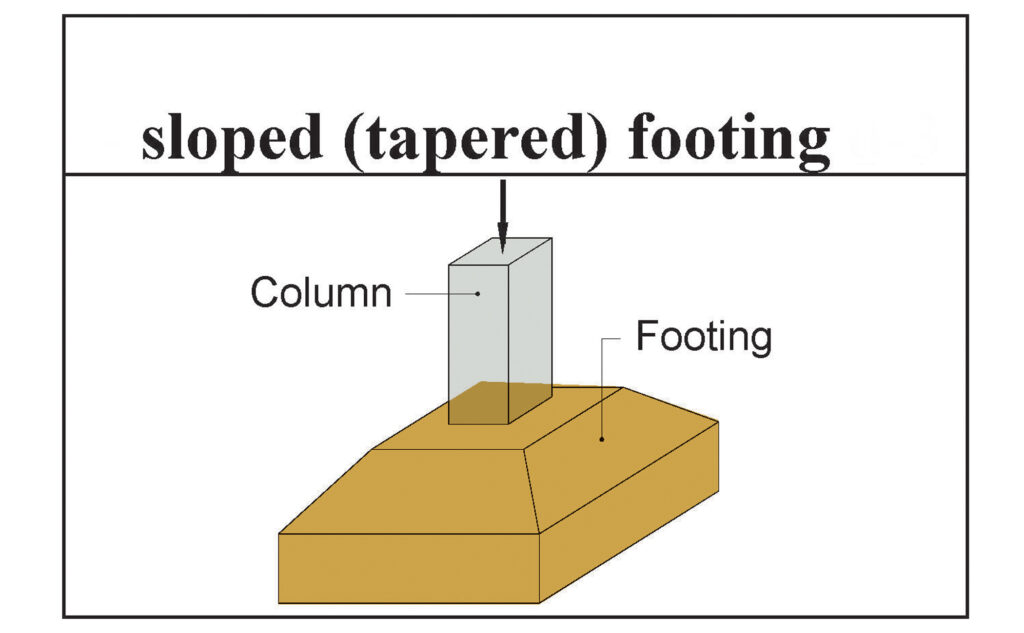
- Combined Footing: When two or more columns are too close to one another, combined footings are used. It’s a slab that supports multiple columns, distributing the weight evenly.
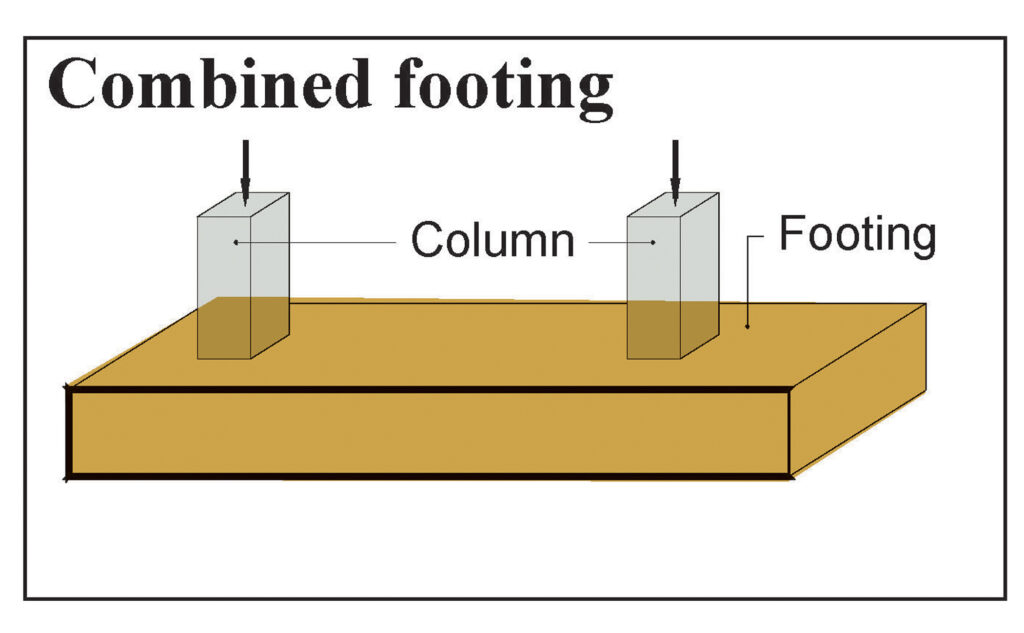
- Strap (Cantilever) Footing: This is used when there’s limited space for a foundation. Two footings are connected by a cantilever beam (strap) to balance the load across both columns.
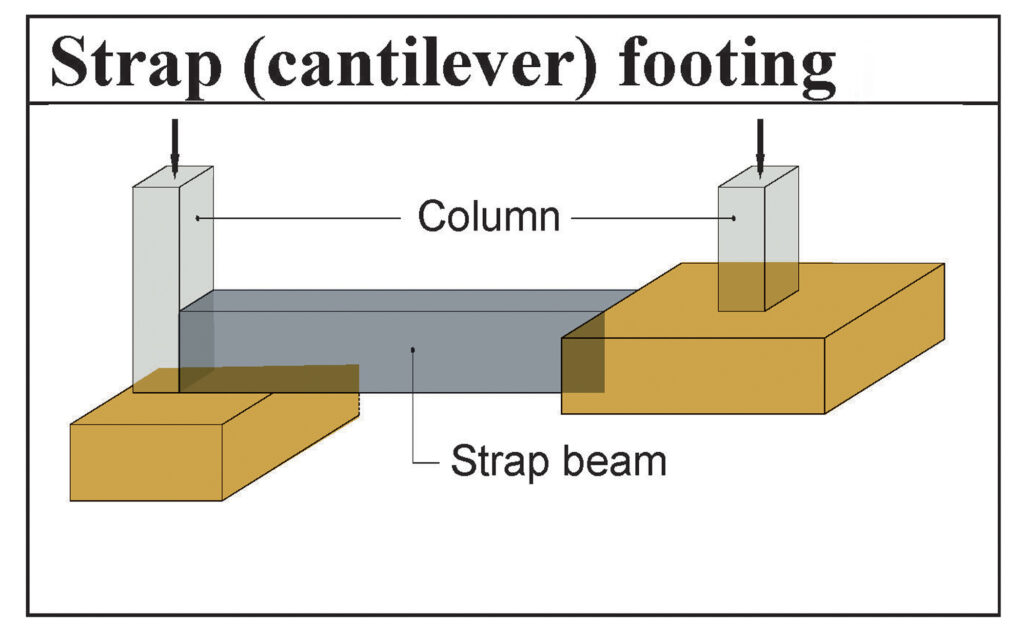
2. Mat (Raft) Foundations
Mat foundations are continuous slabs that spread the load over a larger area, suitable for situations where soil conditions are weak.
- Flat Plate: This type of foundation consists of a thick reinforced concrete slab. It’s typically used in areas where the ground is weak, and it distributes the weight across the entire area.
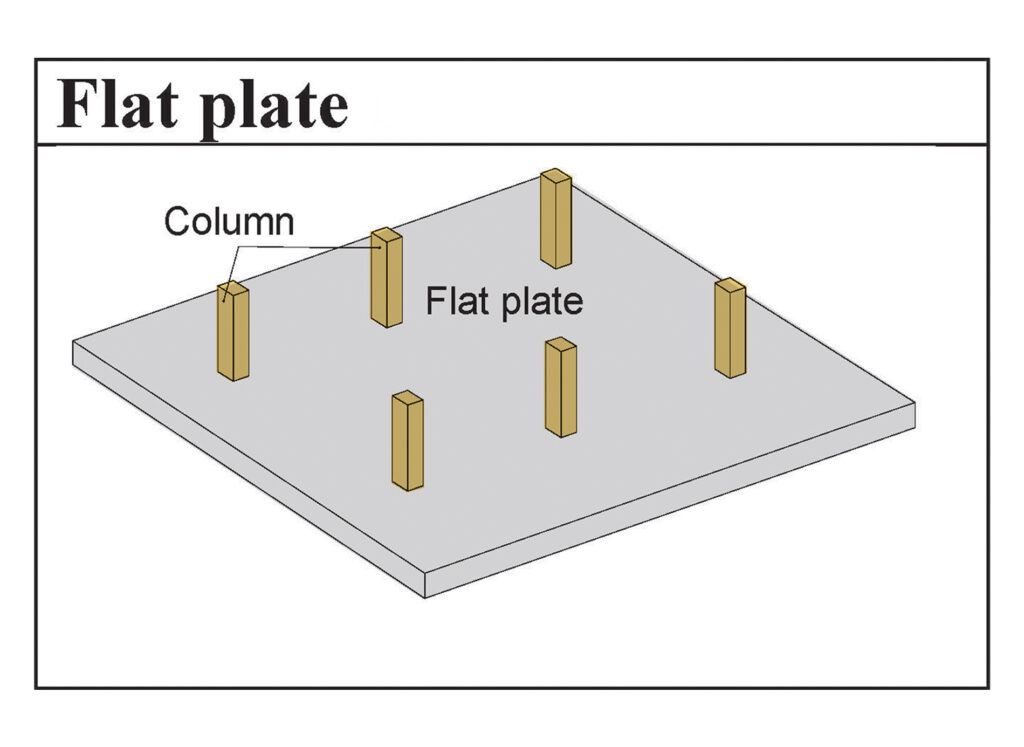
- Flat Slab: Similar to the flat plate, the flat slab has column capitals or drop panels at the columns, providing additional strength and rigidity at the points where loads are concentrated.
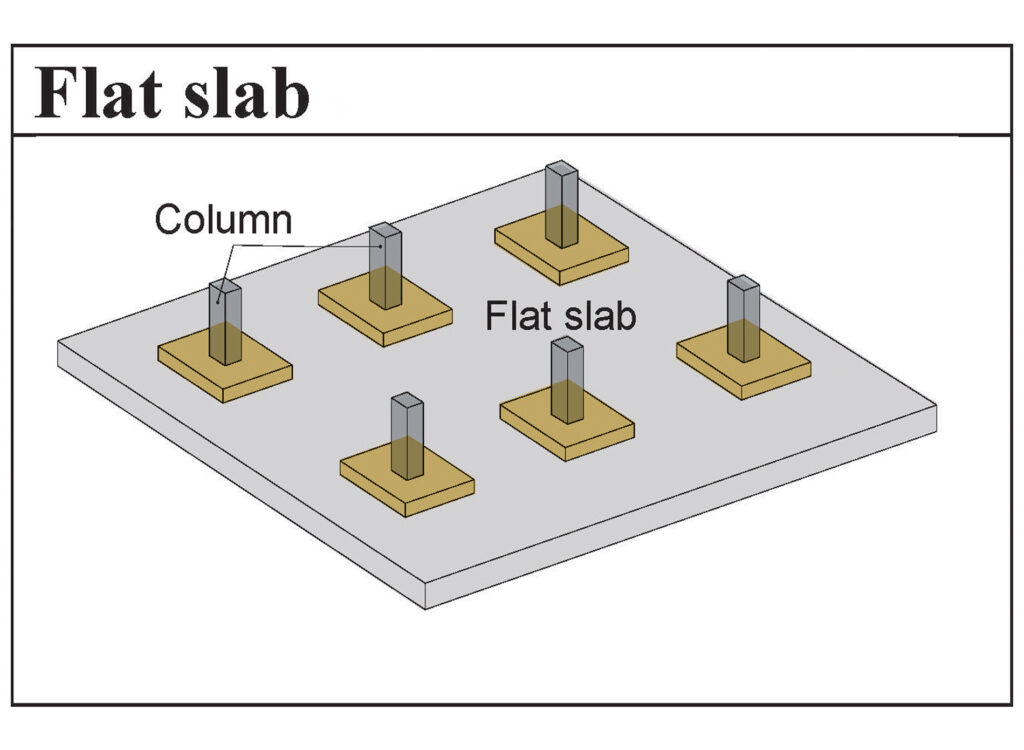
- Ribbed Slab Footing: Ribbed slab foundations are a variation of mat foundations, where ribs (beams) are cast alongside the slab to enhance the overall strength. This design is often used for buildings requiring additional load-bearing capacity.
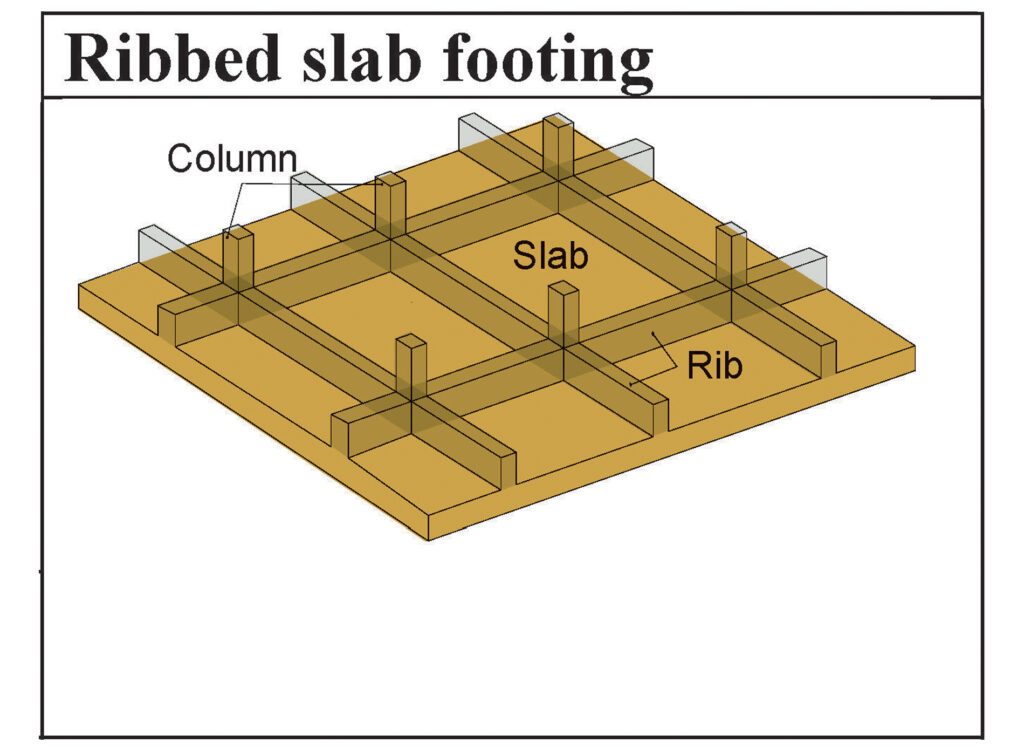
Deep Foundations: Overview and Types
Deep foundations are used when the upper soil layers are too weak to support the structure, and the load needs to be transferred to deeper, more stable soil or rock layers. These types of foundations extend deeper into the ground, well beyond the surface layers.
Pile Foundations
Pile foundations are cylindrical columns that transfer loads to deeper soil layers.
- End Bearing Piles: These piles rest on a strong soil or rock layer deep underground. The load is transferred through the pile into this solid layer, ensuring a stable structure even in areas where the topsoil is weak.
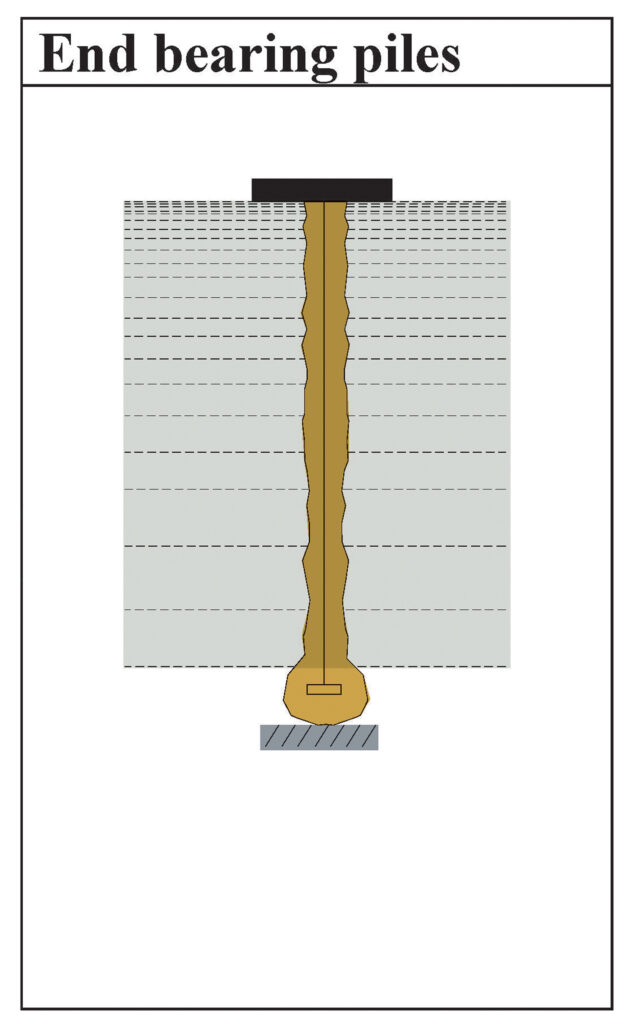
- Friction Piles: Friction piles rely on the friction between the surface of the pile and the surrounding soil to transfer the load. These piles are used when there is no solid layer beneath the structure, and the friction provides the necessary resistance.
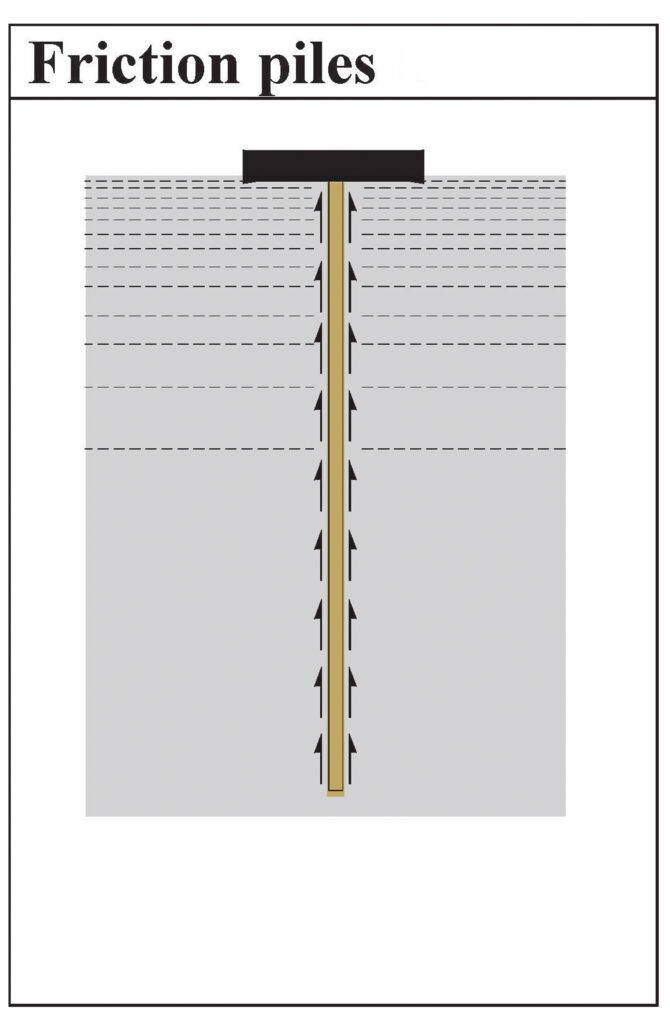
- Combined Piles: These are a combination of both friction and end-bearing piles. The load is transferred through a combination of end-bearing at the base and friction along the sides, offering additional stability.
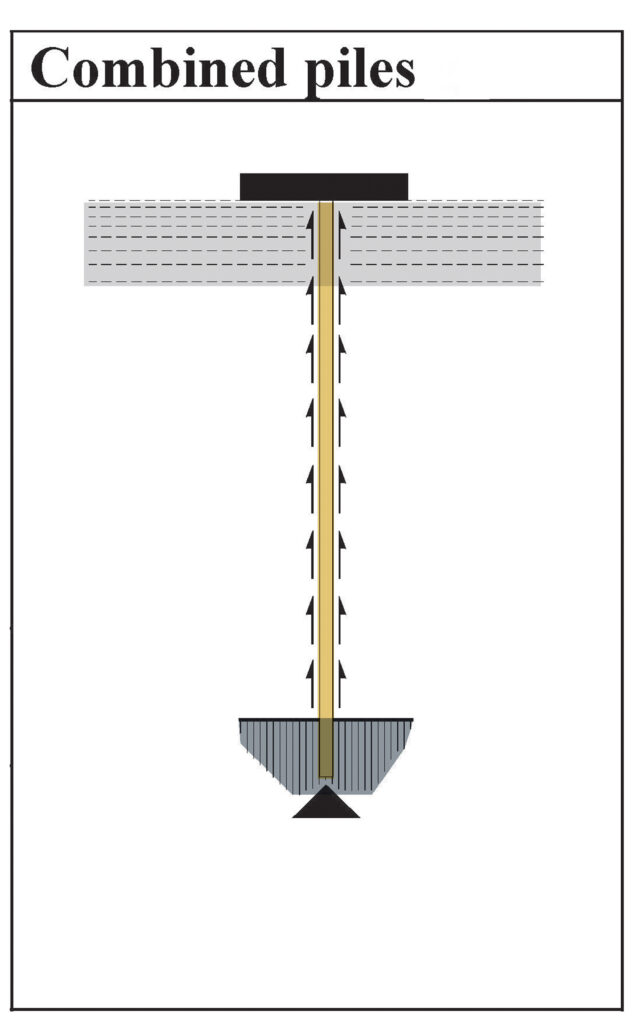
Combination of Shallow and Deep Foundations
In certain complex construction projects, a combination of shallow and deep foundations is used to provide additional support. For instance, a building might require shallow foundations in one part and deep foundations in another, depending on varying soil conditions or structural requirements. This combined approach is often used in large buildings or skyscrapers, where different loads are distributed across various parts of the foundation.
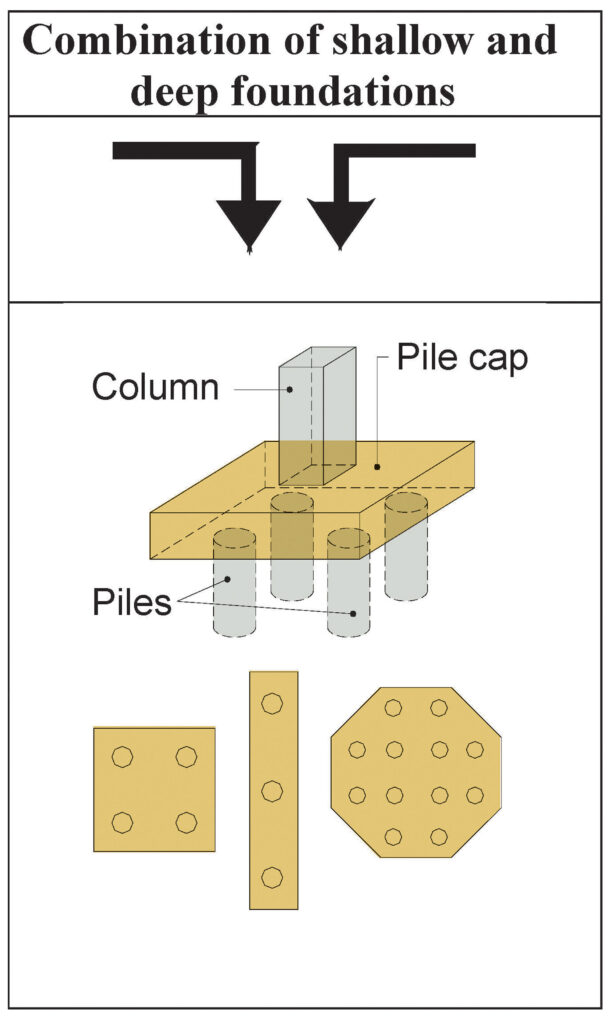
Choosing the Right Foundation for Your Building
Selecting the appropriate foundation type is crucial for the longevity and stability of any structure. Several factors influence this decision:
- Soil Condition: A thorough soil analysis should be conducted before deciding on the foundation type. Shallow foundations are suited for stable, hard soils, while deep foundations are necessary for weaker soils.
- Load Type: The weight of the structure also dictates the foundation. For smaller structures, spread or strip footings suffice, but for heavy buildings or bridges, pile foundations are often required.
- Environmental Factors: Seismic activity, water table levels, and other environmental considerations can also influence the choice of foundation. For example, areas with high seismic activity might require deeper foundations to prevent damage during earthquakes.
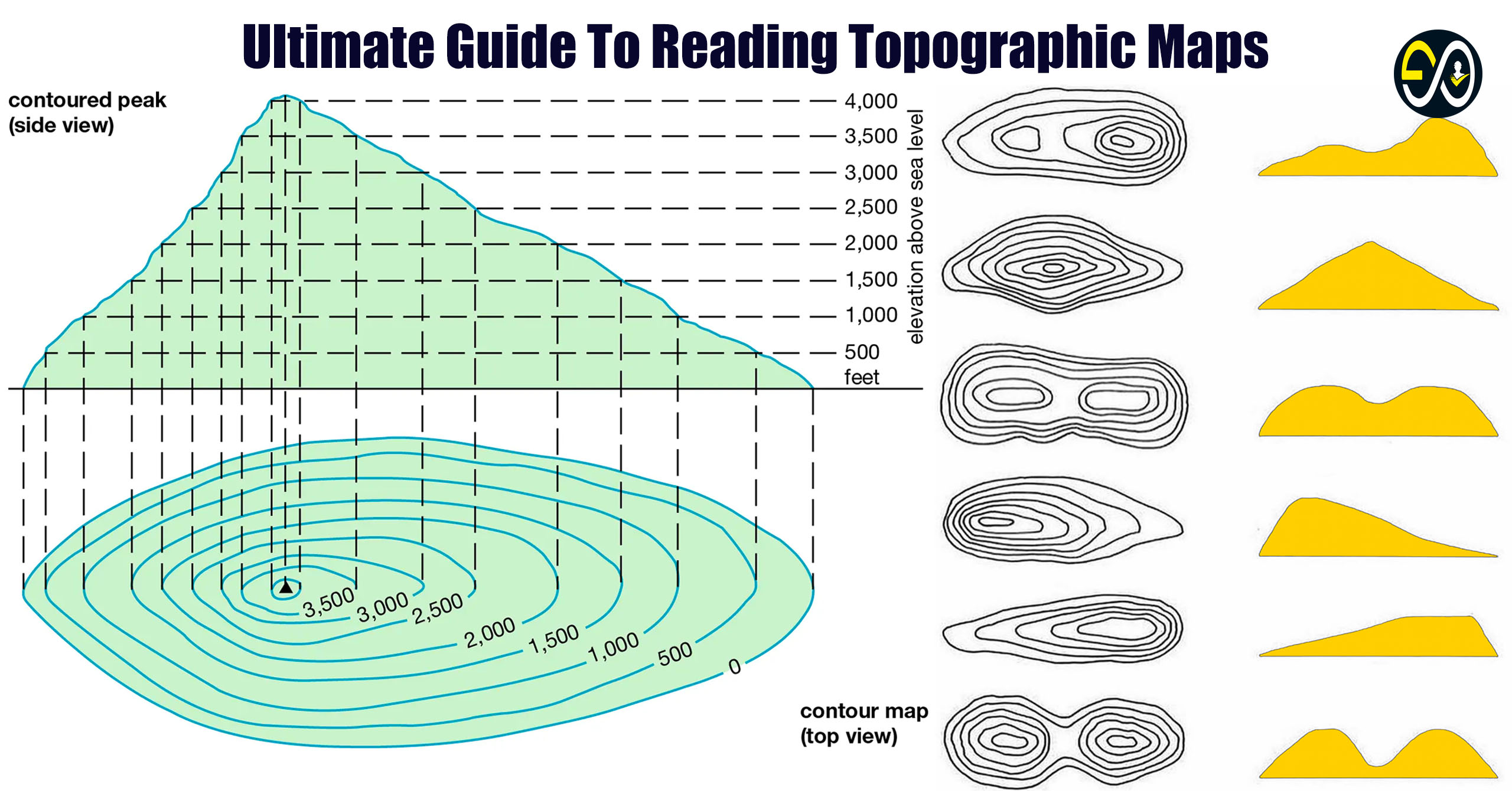
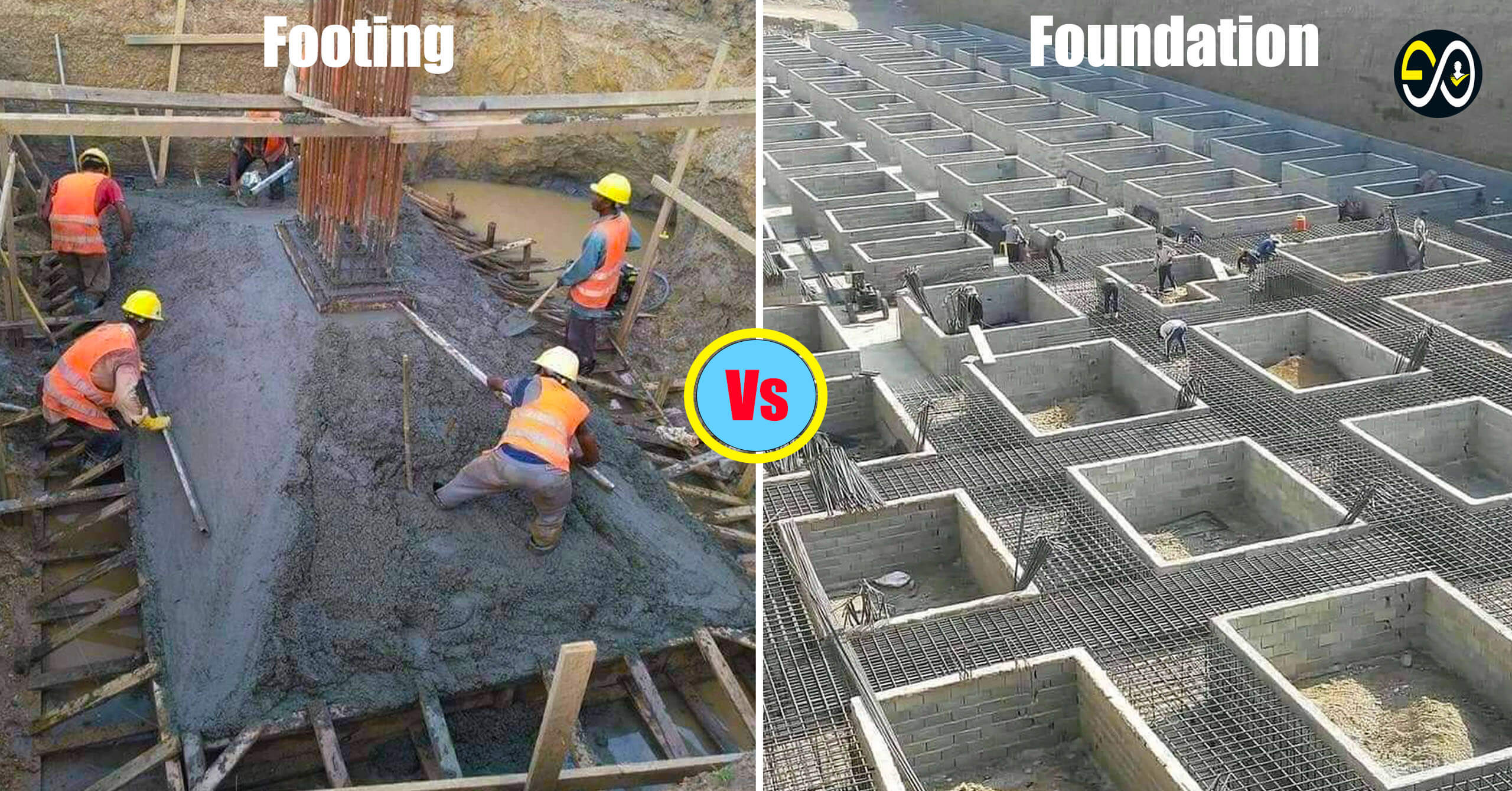

Thank you professor for giving us this educative, quality and professional content like this. Please add download section also where we can have the content as pdf for offline reading. Thank you